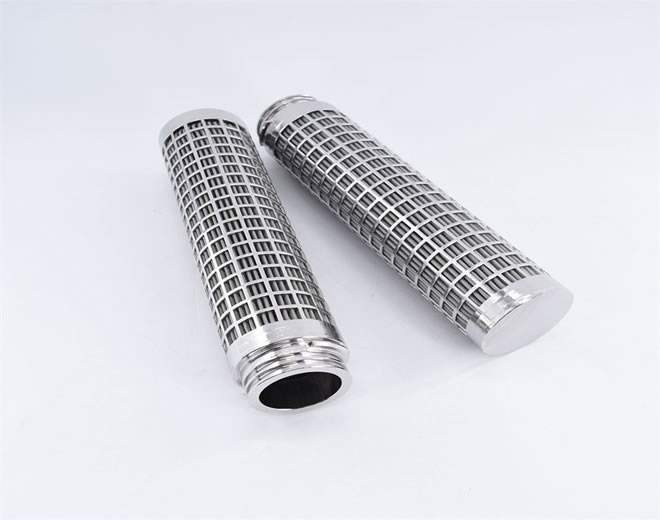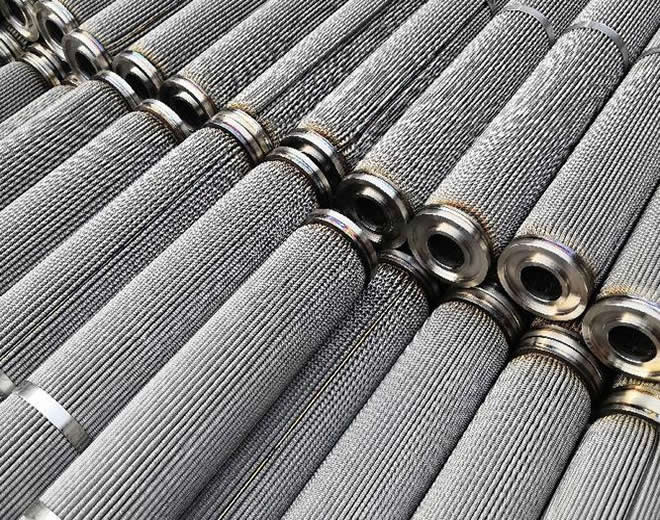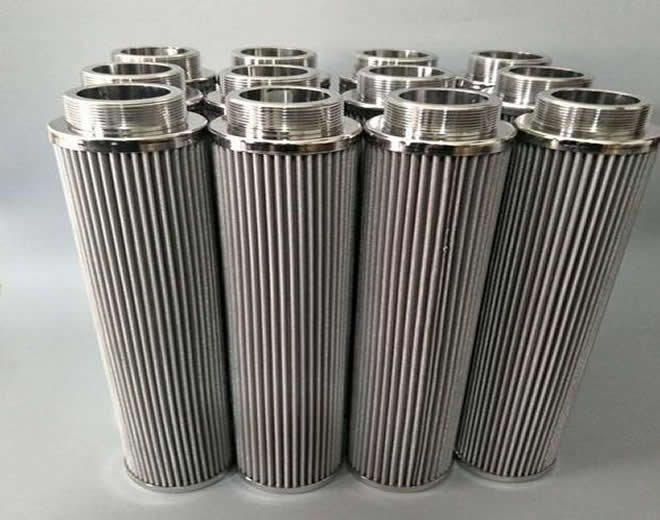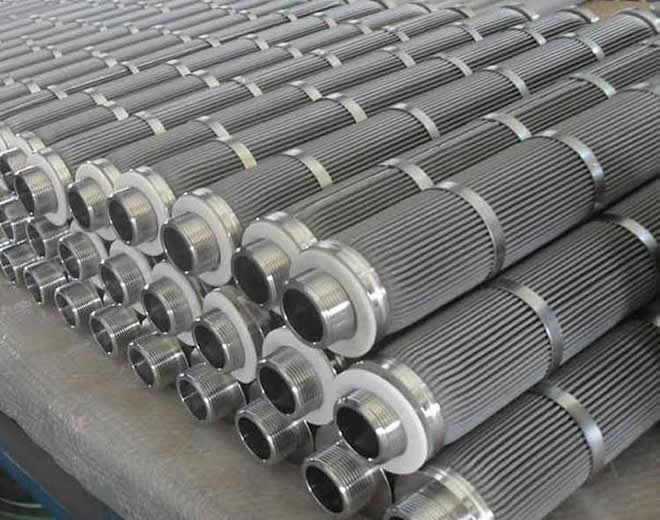









In the realm of industrial filtration, where conditions are extreme, precision requirements are stringent, and dirt-holding capacity is critical, the High-Precision Sintered Felt Filter Element stands out as a premier solution. Unlike sintered wire mesh, which primarily relies on surface sieving, this element achieves a perfect synergy of depth filtration and high accuracy through its unique three-dimensional, random micro-porous structure.
The heart of this filter element is metal fiber felt. It is produced by uniformly layering and compacting very fine metal fibers (typically 316L stainless steel, Hastelloy, etc.) of varying diameters, which are then sintered together in a high-temperature vacuum furnace.
This manufacturing process imparts two fundamental characteristics:
Three-Dimensional Random Matrix: Countless metal fibers intertwine randomly in space, creating a labyrinth of intricate, winding channels.
Gradient Pore Structure: The material can be engineered with pores that gradually decrease in size from the inlet to the outlet side, enabling gradient filtration.
The filtration mechanism of high-precision sintered felt is a classic example of depth filtration:
Multi-Stage Capture: As fluid permeates the felt, contaminants are not merely trapped on the surface. They penetrate the material's depth:
Large particles are captured in the outer layer.
Medium-sized particles are retained in the middle layers.
Fine particles are locked deep within the matrix through effects like inertial impaction, direct interception, and electrostatic adsorption.
"Cake" Filtration: As filtration progresses, a uniform precoat or cake layer forms on the surface, which itself enhances the filtration efficiency.
This "outside-in" loading mechanism grants it a significantly higher dirt-holding capacity than surface-type filters of comparable precision.
Exceptional Dirt-Holding Capacity: Its most defining advantage. The vast internal volume and 3D structure allow it to hold far more contaminant than sintered mesh or pleated cartridges, drastically extending service life and reducing change-out frequency.
High Filtration Precision: Offers a wide precision range, reliably achieving ratings from 1µm to 50µm, with special grades capable of 0.5µm absolute.
High Porosity & Low Pressure Drop: A porosity of 75%-85% ensures fluid passes through with minimal resistance, resulting in low initial pressure drop and reduced energy consumption.
Excellent Temperature & Corrosion Resistance: Like sintered mesh, material options (e.g., 316L) make it suitable for extreme temperatures from -200°C to +650°C and various corrosive media.
High Mechanical Strength & Shock Resistance: The monolithic sintered structure provides substantial mechanical strength, withstands high differential pressures, and resists deformation.
No Media Migration: The metal fibers are fused firmly, guaranteeing no fiber shedding during operation and ensuring downstream fluid purity.
Cleanability & Reusability: Although cleaning can be more challenging than with sintered mesh, it can be effectively regenerated multiple times via high-pressure backwashing, ultrasonic cleaning, chemical soaking, or thermal burnout.
Sintered felt elements excel in applications demanding depth loading and high contaminant capacity:
Polymer & Synthetic Fiber Industry:
Melt Filtration: Its primary battlefield. Used before spinnerets and after extruders to filter gels, carbonized particles, and other impurities from polymer melts, protecting sensitive equipment and ensuring product quality.
Petrochemical Industry:
Filtration of high-temperature, high-pressure feedstock.
Fine recovery and reuse of precious metal catalysts.
Filtration of high-viscosity process fluids.
Hydraulic & Lubrication Systems:
Serves as a main filter in lube oil systems for critical equipment like power plant turbines and large compressors, where its long life ensures continuous operation.
Pharmaceutical & Food Industries:
Clarification of high-viscosity fluids like syrups, chocolate, and beverages.
Sterile purification of process gases (e.g., compressed air, CO₂).
Environmental Protection & Water Treatment:
High-temperature flue gas filtration (often as a composite layer with filter bags).
Pre-filtration for Reverse Osmosis (RO) systems as a final "guard" filter.
Selection Criteria:
Precision: Determine based on the requirements of the protected component or final product.
Material: Choose based on fluid chemical compatibility (316L is a common choice).
Porosity & Flow Rate: For high-viscosity fluids, ensure the element provides sufficient flow capacity.
Configuration: Standard sleeve, pleated (for higher surface area), or with a support core (for enhanced collapse resistance).
Maintenance & Cleaning:
Monitor Differential Pressure: Plan for cleaning when the ΔP reaches 0.2-0.3 MPa (30-45 psi).
Cleaning Methods:
Ultrasonic Cleaning: Most effective for dislodging deeply embedded contaminants.
Chemical Cleaning: Use solvents or acids/alkalis tailored to the specific contaminant.
Thermal Burn-Out: Incinerates organic matter in a controlled oven.
Integrity Testing: After cleaning, conduct a bubble point test to verify performance restoration and structural integrity.